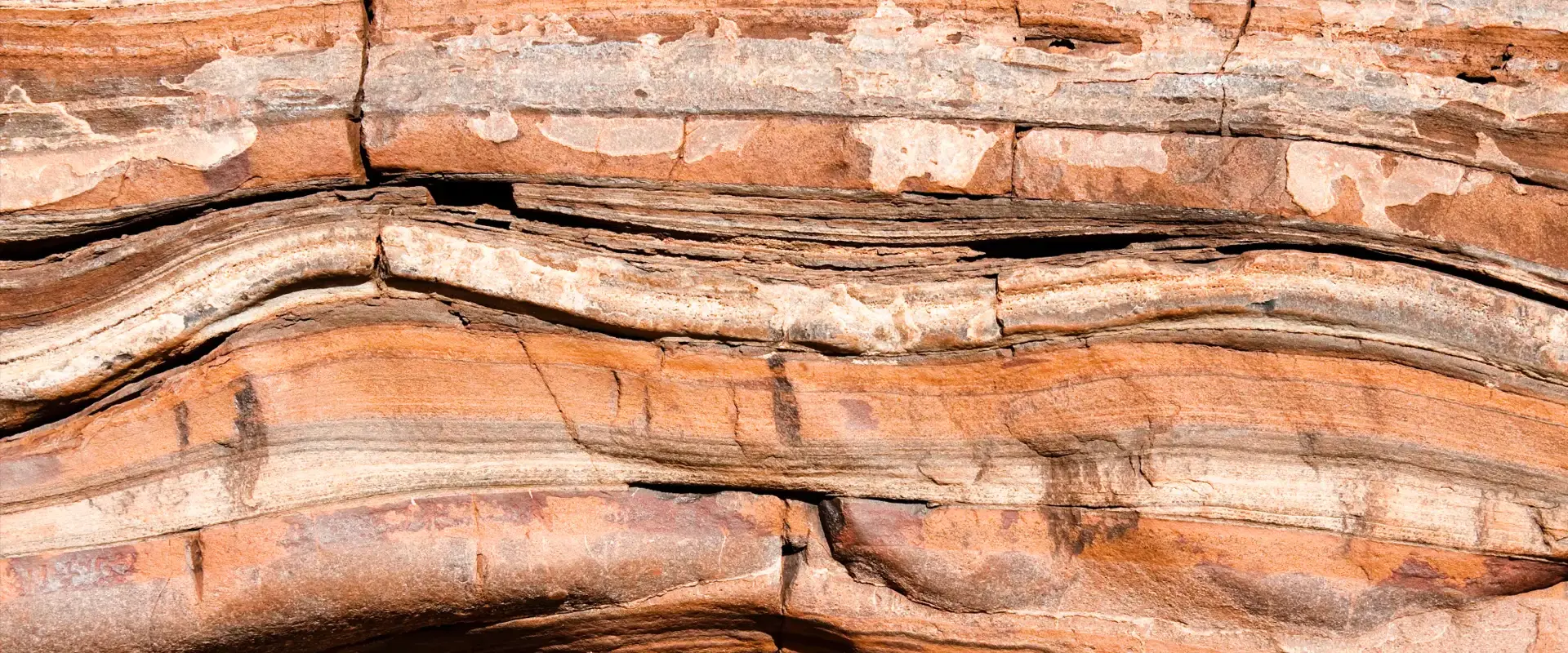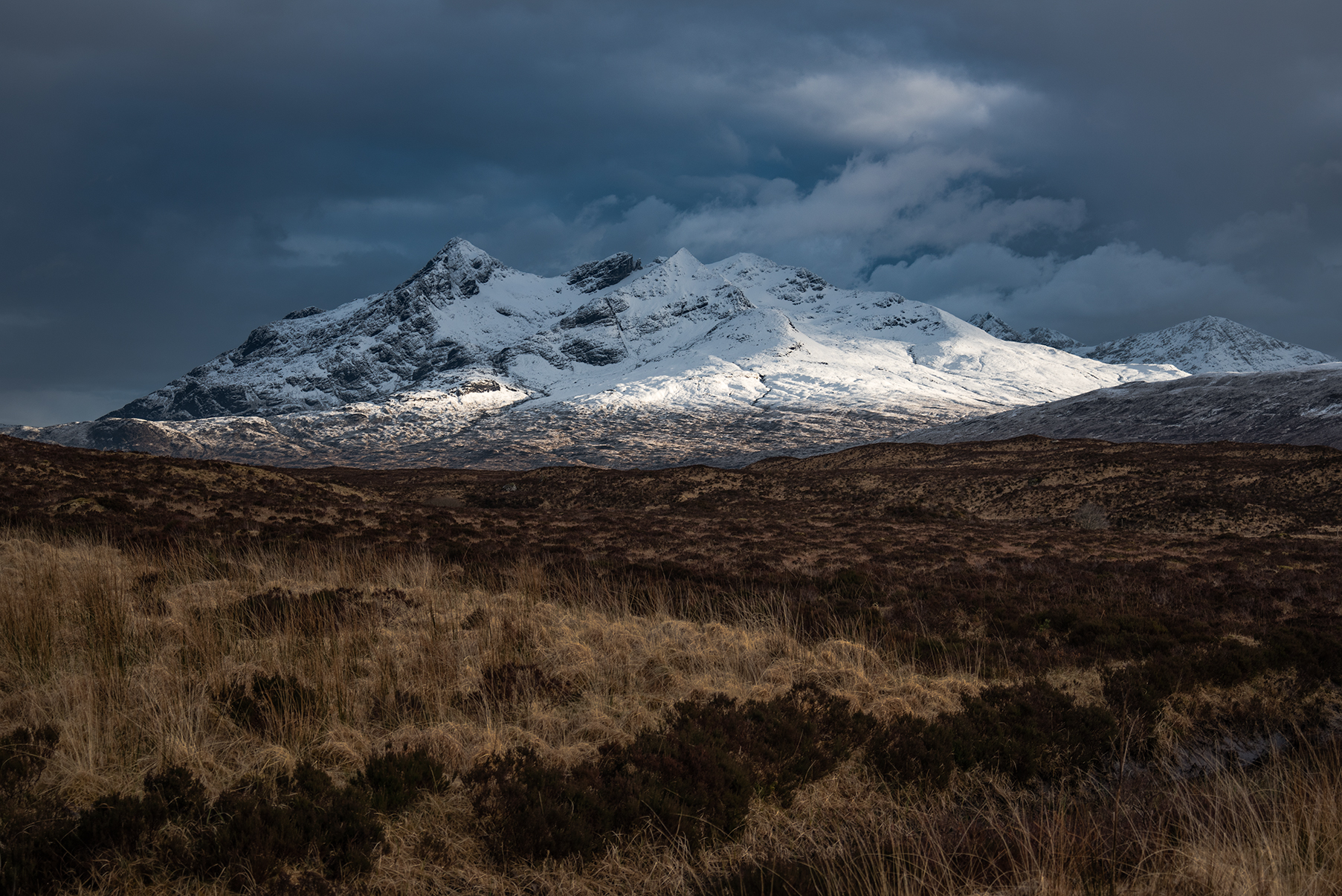
Isle of Skye, Scotland

The Black Cuillin: © Gijs de Reijke
For nearly three billion years, the crust of NW Scotland was joined to Greenland and the Canadian Shield. In the past 60 million years this has changed. The Atlantic Ocean has opened, gradually unzipping from south to north, splitting NW Europe away from North America.
 |
|
| Kilt Rock, Isle of Skye exhibiting columnar jointing: © Pam Brophy |
Yes! The North Atlantic is rimmed by igneous rocks of early Tertiary age (60-55 million years old) – they are collectively known as the North Atlantic Igneous Province. Western Scotland and northern Ireland have the roots of ancient volcanoes, extensive flood basalt flows, and regional vertical intrusions (dyke swarms). Dykes are sheet-like, near vertical bodies of once molten rock (usually basalt) which form when rocks are cracked by stretching, opening up fissures which are filled from below.
The most extensive site where you can see these is on the Isle of Skye. The northern part of the island is dominated by horizontal/sub-horizontal basalt lava flows, which give the landscape a characteristic ‘table-land’ morphology. Punching through these are the volcanic centres – the roots of ancient volcanoes. The most famous of these form the rugged peaks of the Cuillins.
These hills are made up of layered sheets of gabbro (a coarsely crystalline equivalent of basalt, which cooled more slowly deep in the Earth), stacked rather like nested, upside down plastic cups. The Cuillin gabbros are cut by granites of the Western Red Hills. Other granites form the Eastern Red Hills. Granites are coarsely crystalline like Gabbro, but are lighter in colour because they contain more quartz. Some of these granites formed by a process of chemical evolution called ‘fractionation’. As magma crystallizes, different components crystallize out at different times, leaving behind a melt that becomes progressively rich in silica, which forms quartz when it cools.
 |
|
| Dyke on Elgol: © Rob Butler |
Other granites form the other way around - by partial melting of the deeper continental crust, heated up by the intrusion of very hot basic magma from the mantle. The granite in effect is like the more volatile component that gets driven off. Geochemical studies of the Skye granites indicate that both of these processes have occurred – illustrating the complexity of igneous processes that can happen as continents split apart.
Direct evidence of the splitting process comes from the dykes, which are direct evidence of a tensional regime that lasted for many millions of years. Dykes are found throughout Skye, intruding the older bedrock. Great examples are found on the coast at Elgol where basaltic dykes cross-cut Jurassic strata. Rather fewer dykes are seen to cross-cut the gabbros of the Cuillins and fewer still cut the granites. These relationships indicate that dyke intrusion happened over a very long period - throughout the igneous history, for which reason fewer dykes cross-cut the later (younger) intrusions.
Further reading:
Emeleus, C.H. & Gyopari, M.C., (1992), British Tertiary Volcanic Province, Geological Conservation Review Series, No. 4, Chapman and Hall, London, pp. 259. ISBN 0 41247 980 7
Twinned with: Mount Kilimanjaro, Tanzania
Mount Kilimanjaro, in northern Tanzania, is the largest of 20 volcanoes located near the eastern flank of the southern end of the East African Rift Valley (EAR).
The EAR is part of a ‘Y’ shaped active continental rift system where the continental lithosphere is being stretched and thinned to form two new plates; the Nubian and the Somalian plate. The rifting on the EAR began in the Miocene around ...continue reading
Related Links
- Dan McKenzie Archive
- The Rock Cycle
- Plate Tectonics schools website
- Plate Tectonics Glossary
- 100 Great Geosites: Trotternish
- 100 Great Geosites: Cuillins
| Back to main stories page > |
Other sites
- Twin: Windward Isles
Cwm Idwal
- Twin: Mount Pinatubo
Sperrin Mountains
- Twin: Sierra Nevada
Southern Uplands
- Twin: Nankai
Ben Arnaboll
- Twin: Glarus Thrust
Outer Isles
- Twin: Tohoku Earthquake
Clogherhead and Shannon
- Twin: Papua New Guinea
Cairngorms
- Twin: New Hampshire Granites
Great Glen Fault
- Twin: North Anatolian Fault
The Lizard
- Twin: Troodos Ophiolite
Yoredales
- Twin: Antarctica
Stanage Edge
- Twin: Ganges Delta
Hartland Quay
- Twin: Zagros Range
Amroth-Saundersfoot-Tenby
- Twin: Salt Range, Pakistan
Vale of Eden
- Twin: East African Rift Valley
Zechstein
- Twin: Sicily
Alderley Edge
- Twin: Navajo Sandstone
Isle of Skye
- Twin: Mount Kilimanjaro
Lulworth Cove
- Twin: Albania
Giant's Causeway
- Twin: Cascade du Ray Pic
